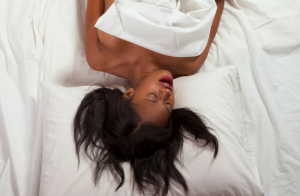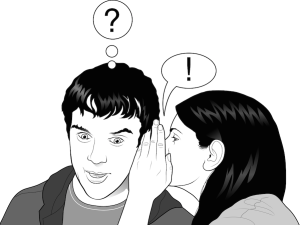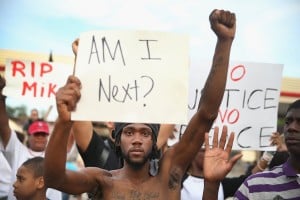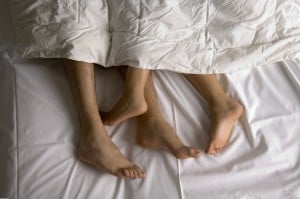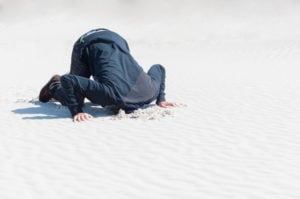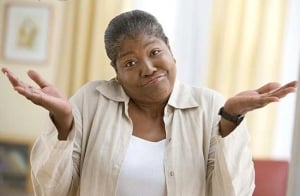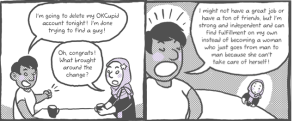Originally published on Daily Dot and republished here with their permission.
My last three girlfriends have all told me that I look straight.
That’s not what you expect to hear from another woman whose clitoris you’ve licked a few dozen times, but it’s the kind of thing I’ve heard in various forms for years.
I’m a femme lesbian, a lipstick lez, a lady dyke, a girly-girl with long hair and painted fingernails.
In nearly twenty years of dating women, I’ve had to field a number of surprising comments and reactions to my sexual preference and identity as a dyke.
“You’re too pretty to be a lesbian,” a gay male newspaper editor once told me with a dismissive wave of his hand when I went for a job interview. I’ve been ranted at by strangers in lesbian bars who essentially told me to go back to Straightsville where they mistakenly thought I belonged.
More recently, I sat in a group made up entirely of lesbian, queer, and trans-masculine people who were discussing dating in the queer scene. Someone turned to me and said, “I’m sorry, I don’t want to assume you’re queer.” Which I responded to with a curt “Why not?”
Why wouldn’t someone assume I was a lesbian in such a clearly defined environment? Answer: I look straight.
Being straight-looking – whatever the hell that means – has its privileges, of course. I feel comfortable traveling to just about any part of the United States without fearing for my safety. I can blend in and pass for straight if needed. I can capitalize on being attractive to men, if I want to, with jobs in the fashion, service, or sex industries.
But more often than not, constantly being mistaken for heterosexual bothers me. It’s a dismissal of my identity that shoves me into the closet, unwillingly, over and over.
I wasn’t always mistaken for straight. Ironically, I looked very much like a boy during my late teens and early twenties – during a phase in which I primarily dated guys.
Back then, I was assumed to be gay due to the short hair and suits that I wore, which contributed to my internal struggle to figure out what I actually was. I’d spent my childhood swinging wildly back and forth between genders – sometimes looking like a boy, sometimes looking like a girl, fielding the inevitable odd looks and questions.
My Catholic grandmother (seriously, bless her heart) even sensed that something was different about me, and bought a copy of the Ms. magazine-published feminist children’s book Stories for Free Children when I was just six years old. Inside was a story by Lois Gould titled X, about a child that had no gender.
Nobody in X’s class had ever known an X. Nobody had even heard grown-ups say, “Some of my best friends are Xes.” What would other children think? Would they make Xist jokes? Or would they make friends? You couldn’t tell what X was by its clothes. Overalls don’t even button right to left, like girls’ clothes, or left to right, like boys’ clothes. And did X have a girl’s short haircut or a boy’s long haircut?”
I guess it’s because of childhood bedtime stories like those that I never felt like my gender expression was constricted by convention. When I slept with mostly men, I looked like a man. As I dated more and more women, I felt more comfortable with femininity.
Like many queers, “coming out” wasn’t something that happened in a single day for me. It was a lifelong private process, something I didn’t even really talk to friends and family about.
For a while, it seemed like everyone but me knew exactly what I was – but their certainty disappeared in my mid-twenties when I grew out my hair, started wearing makeup and jewelry, and became effectively invisible in the queer scene.
It’s that long, uphill climb to self-discovery that makes me so desperately want to be recognized as queer.
I fought for my identity, scrambled to piece it all together during a time in the 1980s and 1990s before there were LGBTQIA+ characters on TV, and the only lesbian I’d ever heard of was Martina Navratilova.
When I was coming out, I wasn’t aware that being feminine and being a dyke at the same time was even an option. Having never heard the words transgender, or genderqueer, or butch, or or femme, I existed in my own weird sphere of gender expression and complicated sexuality.
It was lonely, and I spent about a decade in quiet turmoil, battling my seeming lack of ability to reconcile myself with the world I saw around me.
Having gone through all that, I have a deeply offended, knee-jerk reaction to people who tell me I “look straight.”
I’ve settled into a comfortable and authentic expression of myself, as a casual, tomboy femme lesbian. As far as I’m concerned, I’m just as visibly gay as a butch diesel dyke.
I look queer because I am queer, and thus the definition of what is queer-looking is defined by my existence, not the other way around.
I’m tired of people trying to force lesbian identity into a masculine box – and I’m not the only one.
Femme invisibility has been a longtime struggle for the LGBTQIA+ community. It’s a problem experienced by feminine lesbians, by bisexual and trans women (both are assumed to be straight by default), and by queer and questioning women whose early romantic relationships with other women are almost always seen as a “phase” or “for attention.”
The confusion of gender expression with sexual orientation is just as rampant within the LGBTQIA+ community as outside of it – in fact, it may be even worse.
To explore the effects and roots of femme invisibility, I spoke with a number of queer-identified women who represent a wide swath of femme identity. Each one leapt at the chance to discuss the issue, and each one’s story showed that the dismissal of the feminine in LGBTQIA+ women’s identities is a disturbing, and ultimately destructive, problem.
Many of the women interviewed referred to a spectrum of femme identity ranging from “high femme” (think heels, miniskirts, full makeup, purses, acrylic nails) to tomboy or “low femme” (a t-shirt and jeans kind of girl who might wear the occasional dress, might have short hair, is feminine but not into fussing with hairspray and lip gloss). One even identified herself as “crunchy,” which I took to mean a little bit hippie, a little bit food co-op.
These are just examples; the spectrum of femininity is as wide in the queer community as it is among all women.
A Beth Ditto or an Amber Heard would be considered high femme, while Cara Delevingne and Kristen Stewart might be called low femme tomboys due to their expert navigation of both hoodies and skintight gowns.
Femmes have always been a part of the lesbian community. For just as long, we have struggled to be taken seriously in a culture that deems femininity as little more than a product for the consumption of heterosexual men.
The stories of these five femme women, as well as my own, all stand to illustrate an insidious problem in LGBTQIA+, and specifically lesbian, communities.
Femininity is sometimes seen as the opposite of queer, for mysterious reasons that have no provable basis. Some call it internalized homophobia; others call it misogyny. Either way, feminine women are not taken seriously – no matter how many times they clearly state who they are and what they want.
Trans feminist theory writer Julia Serano’s 2013 book Excluded tackles the strange shunning of femininity in female-centric communities, summarized in the following passage.
It is commonplace for people in both the straight mainstream as well as within our queer and feminist circles to presume that feminine gender expression is more frivolous, artificial, impractical, and manipulative than masculine gender expression, and that those of us who dress or act femininely are likely to be more tame, fragile, dependent, and immature than our masculine or ‘gender neutral’ counterparts. By reclaiming femininity, those of us who are femme are engaged in a constant process of challenging these negative assumptions that are routinely projected onto feminine gender expression.
Whatever the twisted roots of femme invisibility, femmes are actively working to fight it from inside queer communities.
Blogs like Femmeonamission.com, and an annual Femme Conference are just a small part of the movement to celebrate femmes within the LGBTQIA+ community. Writer Jamal Lewis – who is compiling an anthology on femme and gender non-conforming people of color – reminds us that “femme” is an identity that can be claimed by anyone of any gender, and its dismissal and devaluation can be experienced by all who claim it.
With cries of “femme solidarity,” queer femmes are banding together to fight the idea that femininity is somehow less valuable or desirable, somehow less queer, than masculinity.
***
To learn more about this topic, check out these other Daily Dot articles:
- Femme4Femme dating sites help feminine queer women find love
- Lesbian bars are nearly extinct and this is their eulogy
- I’m single, I’m polyamorous, and I don’t want to be the third in your threesome
[do_widget id=’text-101′]
Mary Emily O’Hara is an LGBT Reporter for Daily Dot. You can follow her on Twitter @MaryEmilyOHara.
Search our 3000+ articles!
Read our articles about:
Our online racial justice training
Used by hundreds of universities, non-profits, and businesses.
Click to learn more







